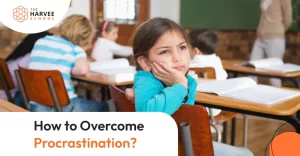Best Healthy Foods For Kids
Eating healthy is one of the best ways to help kids grow strong and stay energetic. It’s not always easy to figure out what’s truly good for them. Between picky eaters and busy schedules, healthy eating might seem like a challenge as a parent. But with the right foods, you can provide a balanced diet that supports their development and keeps them happy.
Here’s a list of the best healthy foods for kids, along with tips to make them more appealing and facts to reassure you about their benefits.
1. Fruits
Fruits are nature’s sweet treat, full of vitamins, minerals, and fiber. Kids love the sweetness of fruits, making them a great option for snacks or desserts.
Top Picks for Kids:
- Apples: High in fiber and vitamin C, they’re great for digestion and boosting immunity.
- Bananas: Rich in potassium, they help with muscle function and energy.
- Berries: Blueberries, strawberries, and raspberries are rich in antioxidants.
- Oranges: A fantastic source of vitamin C, which supports the immune system.
Parent Tip: Serve fruits in fun ways, like making a fruit salad or pairing apple slices with peanut butter. Freeze grapes or bananas for a refreshing treat on hot days.
2. Vegetables
Vegetables are crucial for providing essential nutrients like vitamins A, C, and K, as well as fiber and iron. They support overall health and development.
Kid-Friendly Veggies:
- Carrots: Sweet and crunchy, they’re packed with beta-carotene for healthy eyes.
- Sweet Potatoes: A rich source of vitamin A and complex carbs for sustained energy.
- Broccoli: Full of vitamin K and calcium for strong bones.
- Peas: Contain protein, fiber, and vitamin C.
Parent Tip: Make veggies more appealing by roasting them with a little olive oil and seasoning or blending them into smoothies and sauces.
3. Whole Grains
Whole grains are an excellent source of energy and keep kids feeling full longer. Due to their high fiber content, whole grains support healthy digestion.
Healthy Whole Grains:
- Oatmeal: Packed with fiber and can be customized with fruits and nuts.
- Brown Rice: Contains more nutrients than white rice and is a good source of magnesium.
- Whole-Grain Bread: Provides B vitamins and is perfect for sandwiches.
- Quinoa: A complete protein and a great alternative to rice.
Parent Tip: Gradually swap refined pasta or bread with whole grain to help your child adjust. Add fun toppings like cheese or peanut butter to make it tastier.
4. Dairy Products
Dairy is a vital source of calcium and vitamin D, which are essential for growing bones and teeth.
Top Choices:
- Milk: Provides protein and calcium for strong bones.
- Yogurt: Contains probiotics that promote a healthy gut.
- Cheese: A kid-favorite that’s rich in calcium and protein.
Parent Tip: Choose low-fat or fat-free options if your child consumes a lot of dairy. Add fresh fruits or a drizzle of honey to yogurt for a sweet twist.
5. Protein-Rich Foods
Protein helps build and repair muscles, supports growth, and keeps kids feeling full.
Great Protein Sources:
- Eggs: A versatile option packed with essential nutrients.
- Chicken: Lean and easy to incorporate into meals.
- Beans and Lentils: High in fiber and plant-based protein.
- Fish: Salmon and tuna are rich in omega-3 fatty acids, which are good for brain development.
Parent Tip: Create fun dishes like scrambled eggs or chicken nuggets made at home to encourage kids to enjoy these foods.
6. Nuts and Seeds
Nuts and seeds are tiny powerhouses of healthy fats, protein, and vitamins. They’re also a great snack option.
Best Picks:
- Almonds: High in vitamin E, which supports skin and brain health.
- Walnuts: Rich in omega-3 fatty acids.
- Chia Seeds: Full of fiber and antioxidants.
- Sunflower Seeds: Provide vitamin E and magnesium.
Parent Tip: Blend nuts and seeds into smoothies or sprinkle them over yogurt. For younger kids, ensure nuts are finely ground to prevent choking.
7. Healthy Snacks
Kids often crave snacks between meals, so it’s important to have healthy options ready.
Snack Ideas:
- Rice cakes topped with almond butter.
- Air-popped popcorn (unsalted and butter-free).
- Homemade granola bars.
Parent Tip: Prep snacks in advance and store them in easy-to-reach containers for your kids. This makes healthy choices convenient.
Hydration Matters
Don’t forget about hydration! Water should always be the primary drink for kids, but milk and natural fruit juices can be included in moderation.
Facts About Hydration:
- Water helps transport nutrients in the body and keeps kids energized.
- Dehydration can lead to fatigue and difficulty concentrating.
Parent Tip: Make water fun by adding slices of lemon, cucumber, or berries for flavor.
Balanced Meals Are Key
While including these foods in your child’s diet is important, balance is the ultimate goal. A mix of fruits, vegetables, protein, whole grains, and healthy fats ensures they get all the nutrients they need.
Final Thoughts
Teaching kids healthy eating habits doesn’t have to be overwhelming. By introducing a variety of nutrient-dense foods in creative and fun ways, you can set them up for a lifetime of good health. Remember, it’s okay to indulge occasionally—balance and moderation are key.
Start small, and don’t get discouraged if your child resists at first. Over time, they’ll grow to enjoy and appreciate these healthy choices. After all, happy kids come from happy, healthy meals!






